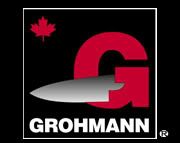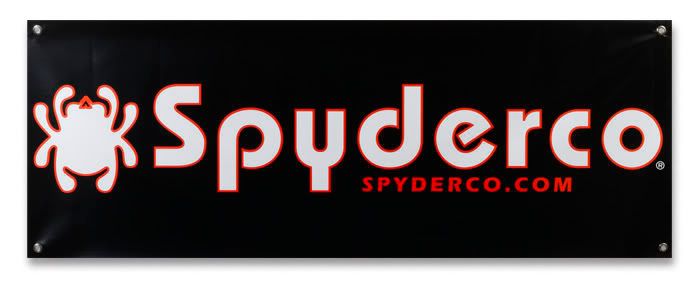Today I took the .30 Herrett barrrel back to the range to try out the load with the 140 gr. Leadheads LFN. In reformed Winchester cases with CCI 200 primers and 12 gr. of IMR SR4759, these loads must have been cooking because they followed the 130 gr. Hornady SSP bullet load all the way out to almost 150 yards. Intended to be a "sub-load", these are in effect a good match to the 130 but in lead. Not what I had in mind at all. Back to the drawing board on this one.
I also still had a box of 20 of the sub-sonic 200 gr. Sierra MK loads. Now this would not stabilize the bullets before but must be just under the required speed because with the ambient air temp 10 degrees warmer a couple actually hit point on! Pushing this bullet as fast as it will go may provide a shootable load. However, I did play with these at 150 yards. While they were all over the place (and I recovered 2 from where the lay on the face of the dirt bank, after obviously striking side on) I did hit my 25 meter pistol target center twice at that range! Another interesting effect is that you can hear them "buzz" as they fly down range end over end!
Got to the fields too early in the afternoon for groundhogs (and it reach 80 today) so didn't see any for tagging with the Hornet. Perhaps we'll have a better day tomorrow.
Monday, April 28, 2003
Well, the weather has not been cooperating and when the weather has, my family hasn't so I've been unable to shoot much (or anything else related) and have had nothing to talk about. Until today...
Went back to the .22 Hornet barrel on Contender #1 and off to the range this morning. Dave R., John T., Adam H., and Scott H. were there and Mr. Greene showed up with his buddies to test yet more .54 NSSA barrels that Mr. Greene has made. Got to test the Hornet at 50, 100, and 150 yards with both the 35 gr. Hornady VMAX loads and the Remington factory. VMAX won by a large margin. I shot one 3-shot group at 150 that measured .3"!!! The Remington was nothing near that. One reason has to be that it doesn't put the bullet close enough to the lands. There is quite a bit of difference in that regard.
Anyway, after a morning of fellowship (the other fellows shot a Marlin 1895SS .45-70, a Ruger No. 1B in 7mm Mag,, a Marlin 983(?), a "sporterized" M96 Swede, a Ruger Ranch Rifle in .223, the .54 Mississippi rifles, and a stainless Savage 110 in .308 with a heavy barrel), I headed home, mowed the lawn, walked the dog, ate lunch and then headed out to Mom's to put new flowers on Dad's grave and check out the local groundhog (aka whistlepig, aka woodchuck) population, .22 Hornet barreled Contender carbine in hand.
Now, I've heard of groundhogs climbing trees but I've never seen it happen, until today. It was pretty warm, about 76 degrees Farenheit, and I was mosying along when I heard what I assumed to be a mighty big fox squirrel on tree trunk. I looked towards the sound, to my left, to see a 8-9 pound groundhog about 4 feet up the trunk hugging that old pine for all he was worth and looking directly at me. Range was about 30 yards. I shot him and then moved in for the post-mortem. Yep, he was dead. The 35 gr. VMAX had done a fine job (as it should have). I don't know if he climbed up to get a look at me or thought he was escaping, but it wasn't a smart thing to do. I'm sure he's feeding something tonight.
This is my first varmint with this particular barrel. I'd hoped to get a shot at 150 to test the bullet (loaded over 13 gr. L'ilGun for an estimated 2800 fps) but that was not to be.
Went back to the .22 Hornet barrel on Contender #1 and off to the range this morning. Dave R., John T., Adam H., and Scott H. were there and Mr. Greene showed up with his buddies to test yet more .54 NSSA barrels that Mr. Greene has made. Got to test the Hornet at 50, 100, and 150 yards with both the 35 gr. Hornady VMAX loads and the Remington factory. VMAX won by a large margin. I shot one 3-shot group at 150 that measured .3"!!! The Remington was nothing near that. One reason has to be that it doesn't put the bullet close enough to the lands. There is quite a bit of difference in that regard.
Anyway, after a morning of fellowship (the other fellows shot a Marlin 1895SS .45-70, a Ruger No. 1B in 7mm Mag,, a Marlin 983(?), a "sporterized" M96 Swede, a Ruger Ranch Rifle in .223, the .54 Mississippi rifles, and a stainless Savage 110 in .308 with a heavy barrel), I headed home, mowed the lawn, walked the dog, ate lunch and then headed out to Mom's to put new flowers on Dad's grave and check out the local groundhog (aka whistlepig, aka woodchuck) population, .22 Hornet barreled Contender carbine in hand.
Now, I've heard of groundhogs climbing trees but I've never seen it happen, until today. It was pretty warm, about 76 degrees Farenheit, and I was mosying along when I heard what I assumed to be a mighty big fox squirrel on tree trunk. I looked towards the sound, to my left, to see a 8-9 pound groundhog about 4 feet up the trunk hugging that old pine for all he was worth and looking directly at me. Range was about 30 yards. I shot him and then moved in for the post-mortem. Yep, he was dead. The 35 gr. VMAX had done a fine job (as it should have). I don't know if he climbed up to get a look at me or thought he was escaping, but it wasn't a smart thing to do. I'm sure he's feeding something tonight.
This is my first varmint with this particular barrel. I'd hoped to get a shot at 150 to test the bullet (loaded over 13 gr. L'ilGun for an estimated 2800 fps) but that was not to be.
Saturday, April 19, 2003
I have (acquired in this order) a TC Seneca .36 (traditional caplock), a Lyman Remington "M1858" New Model Army, a TC New Englander .54 (traditional caplock), a .45 barrel for the Seneca, and a Pedersoli Brown Bess "Carbine" .75 cal. flintlock. In use in the western Virginia hunting conditions, I see no advantage to telescopic sights or in-line ignition at the ranges at which I will use these guns.
Obviously, I expect to have reduced "firepower" and perhaps range. I do not expect less accuracy from the rifled arms. The Bess is a smoothbore and with ball it simply will not be as accurate at ranges past 50 yards as rifled arms. If you hunt with a bow, you've already learned that your range will be limited. This is much the same thing but with a firearm.
In most cases, those buying the in-lines and scoping them are correctly perceived by the industry as wanting to hunt during the muzzleloader seasons without giving up range or power. In short, they are not interested in history, self-limitation, new hunting challenges, etc.
You need to determine the why of your muzzleloading hunting and choose accordingly. Good luck!
Obviously, I expect to have reduced "firepower" and perhaps range. I do not expect less accuracy from the rifled arms. The Bess is a smoothbore and with ball it simply will not be as accurate at ranges past 50 yards as rifled arms. If you hunt with a bow, you've already learned that your range will be limited. This is much the same thing but with a firearm.
In most cases, those buying the in-lines and scoping them are correctly perceived by the industry as wanting to hunt during the muzzleloader seasons without giving up range or power. In short, they are not interested in history, self-limitation, new hunting challenges, etc.
You need to determine the why of your muzzleloading hunting and choose accordingly. Good luck!
Thursday, April 17, 2003
I have finally gotten to do some shooting this week. Today I took out my .22 Hornet barrel. Loads tried were the Winchester 45 gr. HP, the Remington 46 gr. SP and my load using H110 and the Hornady 35 gr. VMAX. Despite the wind some good groups were shot, but not spectacular, averaging 1-1½ inches at 100 yards. Some 3 shot groups went ½ inch but I could not maintain that for an entire 5 round string.
Tomorrow I will be wringing out the .218 Bee barrel by Bullberry. Both of these barrels have 4X scopes mounted.
Tomorrow I will be wringing out the .218 Bee barrel by Bullberry. Both of these barrels have 4X scopes mounted.
Saturday, April 05, 2003
.25-35 Winchester Research
I've been doing some research on the .25-35 Winchester known in Europe as the 6.5x52R. Apparently, I'm one of the few users others just don't have much to contribute. Chuck Hawks has a good short write-up on the cartridge. I would still like to learn more about actual experiences in the use of this cartridge so if you have used it feel free to write.
We do know that it is (was?) used in Europe for Roe Deer in drillings and combination guns. Here in the states it was chambered in the Winchester Model 1894 and Marlin chambered a proprietary "copy" of it called the .25-36 Marlin in their guns. Also, Remington thought enough of its commercial viability to chamber a rimless version (with a different case shape) in their Model 8 auto-loader and Model 14 pump action rifles. While the Marlin is more on line in ballistic performance with the European version known there as the 6.5x52R, it's 117 gr. bullet going about 2000 fps in that cartridge. That's compared to 2250 fps for the same bullet in the Winchester version or 2350 fps in some loadings of the Remington rimless version. Now it seems that the only new made guns are in the form of Thompson Center Contender barrels. Many have apparently been made by the custom shop.
Ken Waters points out that the .25 Remington was touted as an "expert's" cartridge and loaded with 87, 100 and 117 gr. bullets including some full metal jacketed. One of the uses touted for this round was the shooting of geese on the water! In any case it is a mild recoiling round that can take whitetailed deer with care and be loaded as a small game cartridge equal to the .25-20 Winchester. I believe that it could also be a fine eastern coyote cartridge for use at ranges to 175 yards or so.
If you've been following my posts and/or my topics on Accurate Reloading, you've seen that I've had an interesting journey with this particular Contender barrel. Produced by the custom shop, it is 21" long, standard taper, high lustre blue, and drilled only for the scope mount. I've mounted a Swift 1.5-4.5X scope in Weaver mounts and rings. All up weight mounted with the Rynite stock is only 5½ pounds! I purchased it second (?) hand from Ron Sable (I would include a link but his page doesn't seem to be working!) and as usual, it was exactly as described. I don't think it was ever fired much and it is in really good condition (aka NRA fine). FYI, another good place to look for Contender (and Encore) barrels is Ed's Contenders. Ed is a fine gentleman and has a wide range of barrels. Even if you don't see want you want, call or send and e-mail and ask. Please be patient, Ed has at least 2 other jobs and is often out of town.
Of course when reloading one must start somewhere. After I have gun or barrel in hand I generally look at the game I expect to use the particular cartridge on and then seek appropriate bullets. For the .25-35 Hornady makes THE 117 grain round-nose (curiously, factory ammo is all flatnosed!?!) which is, by all accounts, an excellent bullet. Remington also produces an 86 grain bullet intended for the .25-20 Winchester that has a second cannelure which allows one to use your .25-35 seating die set to load both these fine bullets despite the length difference. Both of these bullets are easily obtainable from Midway if you've got difficulties getting your local shop to order for you. There was one other bullet that interested me and that was the Hornady VMAX, a 75 grain, .257" BT type bullet that I thought would be the cat's meow!
My original intent was to take the VMAX and load it with 34 gr. BL-C(2) to about 2800 fps. This part worked out well, I was able to go to the 34 gr. maximum load without signs of excessive pressure and attained 2832 fps average velocity at 10' from the muzzle. So far so good. Accuracy with cases from the same lot is better than factory ammo, averaging right around 1" at 100 yards compared to the factory ammo's (both the Winchester and Sellier and Bellot (S&B) 6.5x52R load) 1 3/4" at that same distance. Unfortunately, there always seems to be a complication, Murphy being alive and well in Virginia.
With the scope mounted and zeroed for the factory ammunition, I attempted to fire my first groups with my handloads consisting of Winchester brass, the 75 gr. Hornady VMAX, 34 gr. Hodgdon's BL-C(2) and a CCI 200 Large Rifle primer. Velocity was, as noted, 2832 fps, a considerable step up from the 2000-2250 fps of factory ammo. At 50 yards bullet strike for this load was a full 10 inches higher than the factory ammo and I don't even have an idea as to where it struck at 100 yards since it was completely off the target backing (but into the berm). Well I didn't want to re-zero, but soon discovered that I was still going to be 3 inches high at 50 yards and the scope had no remaining adjustment. This was a disappointment but never one to give up I tried shimming the rings and base to bring the groups into a usable distance from the point of aim. I was only able to move bullet strike down an additional inch and was uncomfortable with the amount of shim material being used. I was also unhappy that I would not be able to shoot the factory ammo with that sight setting. Indeed, I was not going to be able to zero the rifle with factory ammo with the shims in place. So, out came the shims and this load will be abandoned.
I am now working on the Hornady 117 gr. round nose bullet. Maximum velocities come with 27 gr. of BL-C(2) and the same CCI 200 primer and are averaging 2350 fps or so. This is about 100 fps faster than the Winchester factory but beats the "anemic" 6.5x52R S&B load by 300 fps, a substantial amount. I suppose I should pause and make a couple of comments about the factory ammo.
The Winchester ammo is of the usual high quality we've come to expect from this manufacturer. Brass is good quality and reloadable, it is fairly accurate and dependable. No barn burner but a good solid performer. S&B ammo is a somewhat different story.
While the quality seems to be pretty good and accuracy is pretty good, the brass leaves something to be desired. Out of 2 boxes, 2 cases have had splits in the shoulder/neck region on the first firing. One seldom sees such a propensity for splitting in US made ammunition. This bothers me, and I'm sure it would bother you. Obviously the pressure is not very high, it has to be rooted in the quality of the brass. I'd not use this brass for maximum effort loads and will in fact be using it for loads with the Remington .25-20 86 gr. which I intend to move at about 1800 fps.
Now this should be a useful load, firing a fairly light bullet at very moderate velocities it should be a very mild recoiling round in even this light gun. This will make it a good training cartridge as well as a light but effective groundhog gun and it shouldn't be too destructive of rabbits and squirrels. With any luck I'll be able to get it to shoot to the same point of aim as the 117 gr. bullet load to 100 yards. My first powder to try will be the IMR SR4759. I am hoping that 12-14 gr. will do the trick. SR4759 is often a good powder to use for "reduced" loads where you want to maximize loading density.
That is about all for now. I'll post the results of future work here as well.
We do know that it is (was?) used in Europe for Roe Deer in drillings and combination guns. Here in the states it was chambered in the Winchester Model 1894 and Marlin chambered a proprietary "copy" of it called the .25-36 Marlin in their guns. Also, Remington thought enough of its commercial viability to chamber a rimless version (with a different case shape) in their Model 8 auto-loader and Model 14 pump action rifles. While the Marlin is more on line in ballistic performance with the European version known there as the 6.5x52R, it's 117 gr. bullet going about 2000 fps in that cartridge. That's compared to 2250 fps for the same bullet in the Winchester version or 2350 fps in some loadings of the Remington rimless version. Now it seems that the only new made guns are in the form of Thompson Center Contender barrels. Many have apparently been made by the custom shop.
Ken Waters points out that the .25 Remington was touted as an "expert's" cartridge and loaded with 87, 100 and 117 gr. bullets including some full metal jacketed. One of the uses touted for this round was the shooting of geese on the water! In any case it is a mild recoiling round that can take whitetailed deer with care and be loaded as a small game cartridge equal to the .25-20 Winchester. I believe that it could also be a fine eastern coyote cartridge for use at ranges to 175 yards or so.
If you've been following my posts and/or my topics on Accurate Reloading, you've seen that I've had an interesting journey with this particular Contender barrel. Produced by the custom shop, it is 21" long, standard taper, high lustre blue, and drilled only for the scope mount. I've mounted a Swift 1.5-4.5X scope in Weaver mounts and rings. All up weight mounted with the Rynite stock is only 5½ pounds! I purchased it second (?) hand from Ron Sable (I would include a link but his page doesn't seem to be working!) and as usual, it was exactly as described. I don't think it was ever fired much and it is in really good condition (aka NRA fine). FYI, another good place to look for Contender (and Encore) barrels is Ed's Contenders. Ed is a fine gentleman and has a wide range of barrels. Even if you don't see want you want, call or send and e-mail and ask. Please be patient, Ed has at least 2 other jobs and is often out of town.
Of course when reloading one must start somewhere. After I have gun or barrel in hand I generally look at the game I expect to use the particular cartridge on and then seek appropriate bullets. For the .25-35 Hornady makes THE 117 grain round-nose (curiously, factory ammo is all flatnosed!?!) which is, by all accounts, an excellent bullet. Remington also produces an 86 grain bullet intended for the .25-20 Winchester that has a second cannelure which allows one to use your .25-35 seating die set to load both these fine bullets despite the length difference. Both of these bullets are easily obtainable from Midway if you've got difficulties getting your local shop to order for you. There was one other bullet that interested me and that was the Hornady VMAX, a 75 grain, .257" BT type bullet that I thought would be the cat's meow!
My original intent was to take the VMAX and load it with 34 gr. BL-C(2) to about 2800 fps. This part worked out well, I was able to go to the 34 gr. maximum load without signs of excessive pressure and attained 2832 fps average velocity at 10' from the muzzle. So far so good. Accuracy with cases from the same lot is better than factory ammo, averaging right around 1" at 100 yards compared to the factory ammo's (both the Winchester and Sellier and Bellot (S&B) 6.5x52R load) 1 3/4" at that same distance. Unfortunately, there always seems to be a complication, Murphy being alive and well in Virginia.
With the scope mounted and zeroed for the factory ammunition, I attempted to fire my first groups with my handloads consisting of Winchester brass, the 75 gr. Hornady VMAX, 34 gr. Hodgdon's BL-C(2) and a CCI 200 Large Rifle primer. Velocity was, as noted, 2832 fps, a considerable step up from the 2000-2250 fps of factory ammo. At 50 yards bullet strike for this load was a full 10 inches higher than the factory ammo and I don't even have an idea as to where it struck at 100 yards since it was completely off the target backing (but into the berm). Well I didn't want to re-zero, but soon discovered that I was still going to be 3 inches high at 50 yards and the scope had no remaining adjustment. This was a disappointment but never one to give up I tried shimming the rings and base to bring the groups into a usable distance from the point of aim. I was only able to move bullet strike down an additional inch and was uncomfortable with the amount of shim material being used. I was also unhappy that I would not be able to shoot the factory ammo with that sight setting. Indeed, I was not going to be able to zero the rifle with factory ammo with the shims in place. So, out came the shims and this load will be abandoned.
I am now working on the Hornady 117 gr. round nose bullet. Maximum velocities come with 27 gr. of BL-C(2) and the same CCI 200 primer and are averaging 2350 fps or so. This is about 100 fps faster than the Winchester factory but beats the "anemic" 6.5x52R S&B load by 300 fps, a substantial amount. I suppose I should pause and make a couple of comments about the factory ammo.
The Winchester ammo is of the usual high quality we've come to expect from this manufacturer. Brass is good quality and reloadable, it is fairly accurate and dependable. No barn burner but a good solid performer. S&B ammo is a somewhat different story.
While the quality seems to be pretty good and accuracy is pretty good, the brass leaves something to be desired. Out of 2 boxes, 2 cases have had splits in the shoulder/neck region on the first firing. One seldom sees such a propensity for splitting in US made ammunition. This bothers me, and I'm sure it would bother you. Obviously the pressure is not very high, it has to be rooted in the quality of the brass. I'd not use this brass for maximum effort loads and will in fact be using it for loads with the Remington .25-20 86 gr. which I intend to move at about 1800 fps.
Now this should be a useful load, firing a fairly light bullet at very moderate velocities it should be a very mild recoiling round in even this light gun. This will make it a good training cartridge as well as a light but effective groundhog gun and it shouldn't be too destructive of rabbits and squirrels. With any luck I'll be able to get it to shoot to the same point of aim as the 117 gr. bullet load to 100 yards. My first powder to try will be the IMR SR4759. I am hoping that 12-14 gr. will do the trick. SR4759 is often a good powder to use for "reduced" loads where you want to maximize loading density.
That is about all for now. I'll post the results of future work here as well.
Thursday, April 03, 2003
Well, I went shooting again today. Beautiful. Took the .41 Mag and .25-35 (6.5x52R) back to the range.
The .41 Remington Magnum Bullberry barrel is a beaut and I am starting to like the Simmons Pro-diamond reticule. Using a load of 22.5 gr. Hodgdon L'ilGun with the Hornady 210 gr. XTP gets about 1800 fps from this 16" barrel. This just about equals the Winchester factory 200 gr. silvertip load for the .35 Remington. Now this may not seem like much but a load this powerful that shoots fairly flat to 150 yards and is in a 5 lb. rifle platform with a scope that has a built in "ranging" capability (once I figure it out). That has to be a good thing. Maybe the pistol shooters don't agree, Well, this is a Contender, maybe pistols aren't for everyone (and I shoot one fairly well) and this will suit somebody's needs.
The .41 Remington Magnum Bullberry barrel is a beaut and I am starting to like the Simmons Pro-diamond reticule. Using a load of 22.5 gr. Hodgdon L'ilGun with the Hornady 210 gr. XTP gets about 1800 fps from this 16" barrel. This just about equals the Winchester factory 200 gr. silvertip load for the .35 Remington. Now this may not seem like much but a load this powerful that shoots fairly flat to 150 yards and is in a 5 lb. rifle platform with a scope that has a built in "ranging" capability (once I figure it out). That has to be a good thing. Maybe the pistol shooters don't agree, Well, this is a Contender, maybe pistols aren't for everyone (and I shoot one fairly well) and this will suit somebody's needs.
Subscribe to:
Comments (Atom)





















